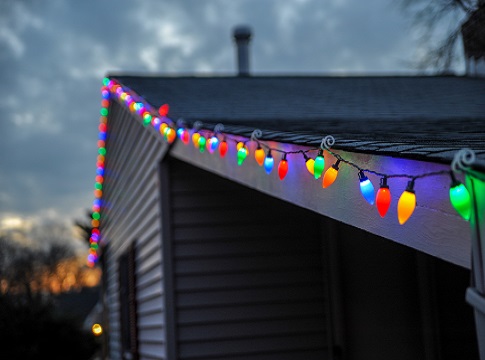Related News
Related News
-
Sustainability Snapshot - Celebrating Energy Efficiency Projects in the Community
Sustainability Snapshops highlight impactful projects completed by EWEB's Customer Solutions department, as a way to celebrate the meaningful work happening behind the scenes.
Find Out More -
EWEB Sets 2026 Budget and Rates, Advances Evaluation of McKenzie Valley Service Territory Realignment
Taken together, the 2026 budget and rate adjustments and the territory-realignment evaluation reflect EWEB’s dedication to responsible financial stewardship, modern, resilient utility infrastructure, and thoughtful planning for the future.
Find Out More -
Let's Talk Turkey. Is your family ready for winter?
We're heading into the holidays, but that also means snow, ice, and not-so-nice weather might be in the forecast. Here are some tips to prepare in advance.
Find Out More -
The Bonneville Power Administration Rate Change and Your EWEB Bill
BPA’s finalized rate increase is smaller than projected, and EWEB’s pass-through adjustment effective October 1, 2025 will now be 2.7% for residential customers—down from the anticipated 4%.
Find Out More -
Join the Pledge to Prepare
When you think about getting ready for an emergency, you probably have questions. You aren't alone. Preparing for emergencies can be overwhelming, which is why EWEB has put together a 12-month program to help you and your family get two weeks ready.
Find Out More -
You can’t predict the next disaster, but you can prepare
The earthquake lasted less than a minute. But now the power’s out. The tap runs dry. Cell service is spotty. Would you be ready?
Find Out More -
Sustainability Snapshot - Ideal Steel July 2025
Our second Sustainability Snapshop highlights a project where EWEB helped a local industrial warehouse upgrade over 1,000 flourescent lights to new efficient LEDs.
Find Out More -
EWEB Pilots New Line Safety Program for 4th graders.
This year, EWEB is ramping up power line safety for children, specifically 4th graders.
Find Out More -
EWEB opens applications for 2025 Electric Mobility Community Grant
The Eugene Water & Electric Board is now accepting applications for the 2025 Electric Mobility Grant, reinforcing EWEB's commitment to sustainability and cleaner transportation.
Find Out More -
Watch the Recording: Financial Preparedness for Disasters
How will you financially recover after a disaster? This seminar gives key insights into preparing your finances ahead of time.
Find Out More -
Greenpower subscribers vote to award Greenpower Grant to SquareOne Villages
The Greenpower Grant, funded solely by voluntary customer subscriptions, supports local sustainability projects.
Find Out More -
Energy conservation could offset large portion of growth in power demand
Preliminary results of an EWEB study indicate that cutting back demand can contribute to maintaining a reliable, affordable energy supply.
Find Out More -
Small number of McKenzie Valley EWEB customers face higher February bills due to estimated reads
EWEB under-estimated energy usage for about one-fifth of upriver customers in December or January, resulting in higher true-up bills in February.
Find Out More -
EWEB offers Greenpower Grant to support local sustainability project
The Greenpower Grant, funded by voluntary customer subscriptions to Greenpower, not customer grants, supports projects that advance renewable energy, clean energy education or efforts to reduce or offset local carbon emissions.
Find Out More -
Rising Together: Female operation staffers begin industry mentorship program
One week into Women's History Month and just before International Women's Day on March 8, three women in EWEB leadership roles embarked on a 10-month-long journey of mentorship, fellowship, and professional development.
Find Out More - Show More
Can LED holiday lights actually save a noticeable amount of money?
December 16, 2022

During the winter, and especially over the holidays, home energy usage goes up. This means your holiday electric bill goes up as well. For example, the average home that uses 1050 kilowatt-hours of electricity a month, or about $4 a day, can easily see increased usage add up to $7 or $8 a day over the winter holiday months.
By now, most people have made the switch to LED lights. But if you decorate with holiday lights, will LEDs really save you any noticeable amount of money compared to traditional incandescent bulbs?
The answer is a resounding YES!
Cost comparison
LEDs consume 80 to 90 percent less power than incandescent lights.
To put it in real dollars, if you have a modest holiday display on your home, your energy costs would be approximately $10-$15 for incandescent lights or around $2 for LEDs for the holiday season.
To go full-Griswold, the costs could be well over $300 with traditional lighting compared to $40-$50 with LEDs.
Other benefits of LED holiday lights
-
- With traditional lights, you can connect only four or five strings of lights together on one outlet, but with LED lights you can safely connect at least 20 light strings together.
-
- LED holiday lights come in a wider range of colors, are generally brighter than incandescent light strings. If you like the look of traditional incandescent bulbs, look for warm white LEDs.
-
- LED lights don't produce any heat, making them safer for indoor use and in trees.
-
- LED lights last up to 50,000 hours (around 6 years!), compared to the 2,000-hour average life span for incandescent lights.
Set a timer and save even more
Why leave your holiday lights on all-night-long, when there's no one awake to enjoy them? Save money by using a timer to limit your display to a few hours each evening.

